Small Scale Winter Composting
Keep on soil building right through the cold
It's hard to keep your compost pile going through the winter - even if you can get to it. Cold temperatures stall the micro herd in their tracks, and make it impossible to continue with frozen and chilled kitchen scraps on the menu.
Here's a way to get the process to carry on even through cold snaps and chilly times. It's useful to have garbage cans around in the garden; they get a lot of use for capturing rainwater, and making compost tea, but when winter is just around the corner the water has to be drained and the buckets and cans emptied in readiness for freezing temperatures.
Instead of putting them away, why not keep using them?
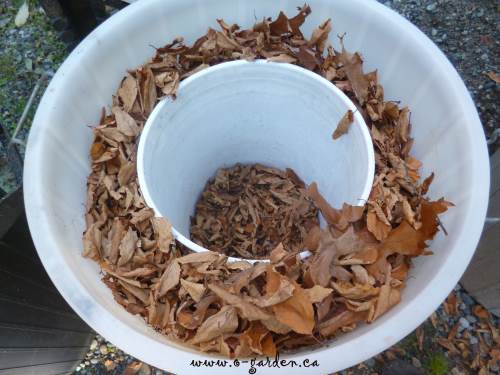
Here's my plan; fill the bottom half of the garbage can with dry fall leaves. Place a large 20 liter bucket on top of it, then fill in the sides between the bucket and the can until you reach the top. This is where you'll put your kitchen scraps over the winter, with the leaves acting as insulation to keep the scraps and the micro herd just above freezing.
A shovel full of mature compost will add the micro organisms and a few worm eggs which will hatch and start the all important task of breaking the scraps down.
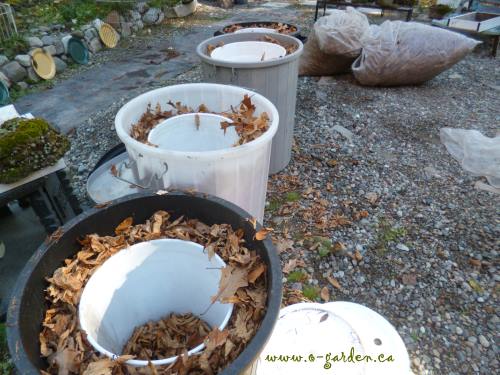
When spring arrives, the partially rotted down scraps can be easily tipped into a new compost bin, where they'll continue to decompose and heat up. Since they've never been frozen (with any luck) you'll be able to do this early in the spring so you'll have a new batch of mature compost for seed starting or top dressing when planting your vegetable garden. Don't thank me now, that can wait until you have that first crisp salad of the season.
Want to know more about the large scale version of this method? Sign up for the newsletter and get the five installations all about making more of the black gold your garden craves;
Sign up for
Out in the O-Garden Newsletter
and get your five part composting E-course - FREE!
Join my
email
group and get tips, information and more monthly-ish.
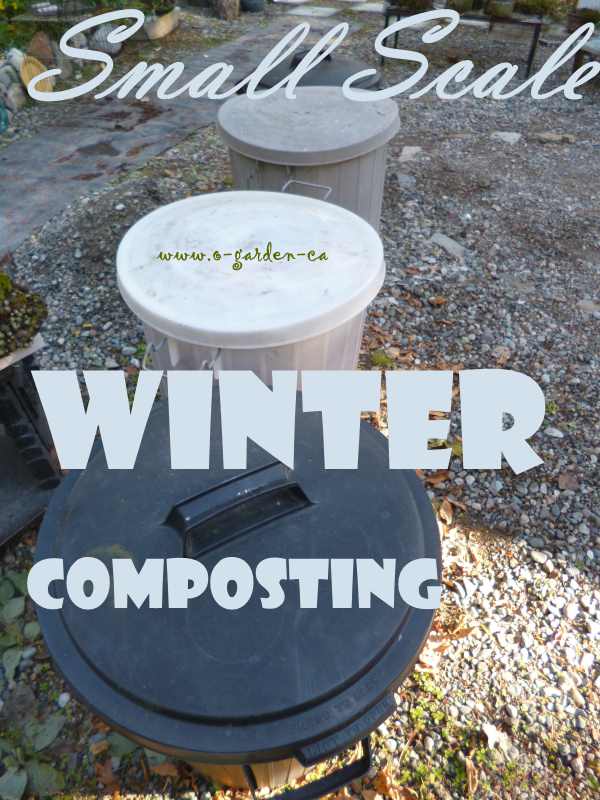


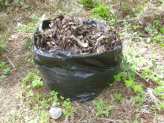
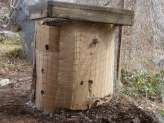
New! Comments
Have your say about what you just read! Leave me a comment in the box below.